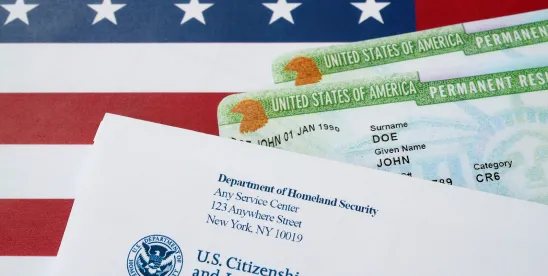The Diversity Immigrant Visa Program, commonly referred to as the green card lottery, was established by the U.S. government to provide individuals from countries with low immigration rates a chance to live and work in the U.S.
Each year, the U.S. Department of State conducts a random lottery drawing to select 55,000 applicants who will be given the opportunity to apply for a Diversity Visa (DV). This selection process is based on a computer-generated random lottery system, ensuring fairness and equal opportunities for all participants.
To qualify, applicants must be a citizen of a country deemed eligible by the U.S. government and have either a high school education or its equivalent or possess two years of work experience in a qualifying occupation.
Applying for the DV Program is an exciting opportunity for those looking to immigrate to the United States. However, even a minor mistake when filling out the entry form can lead to a major complication in the registration process.
By understanding the most common mistakes and learning how to avoid them, applicants can improve their chances of submitting a successful entry to the green card lottery.
The seven “deadly sins” of the Diversity Visa application process
Green card lottery entries are submitted electronically via the Electronic Diversity Visa (E-DV) website during the specified registration period. Although the DV instructions provide detailed guidance for completing the online entry form, there are seven common mistakes — aka “deadly sins” — that could result in delays or even rejection of the application.
1. Submitting multiple entries
The law allows only one entry by or for each person during each registration period. The Department of State uses advanced technology to detect multiple entries. Submissions of more than one entry will be disqualified. Applicants should take the time to review and double-check their information before submitting it.
2. Missing the deadline
No late entries or paper entries are accepted. Applicants must use the E-DV website for submission and must submit their application by the specified deadline.
The online registration period for the 2026 DV Program is open now through Nov. 5, 2024, at 12 p.m. Eastern Standard Time (EST) (GMT-5).
3. Inputting inaccurate personal information
Applicants should ensure their name and surname are entered exactly as they appear on their passport or other identification documents. They should avoid using nicknames or name variations to prevent discrepancies that could raise concerns during the review process. Applicants should also double-check the date of birth and make sure the correct day, month and year are entered. Inaccuracies in this section can lead to delays or even rejection of the entry form.
4. Omitting family members
Applicants should make sure to include all immediate family members in the entry, including a spouse and any unmarried children under the age of 21. Failure to list any eligible family members can result in their exclusion from the program.
5. Using third-party websites for assistance
Be cautious of third-party websites claiming to assist with the entry process. These sites often charge unnecessary fees and may provide inaccurate information. It is recommended to visit the official Department of State website or trusted government portal for the application.
Applicants are encouraged to complete the entry form without a “visa consultant,” “visa agent” or any other facilitator who offers to help. If an agent is used, the applicant should be present when the entry form is prepared so that the correct answers to the questions can be provided and the applicant can retain the confirmation page and unique confirmation number.
6. Leaving entry fields blank
As we outlined above, to avoid rejection or delays applicants should ensure that all required fields are filled out. Missing information or leaving any mandatory fields blank can result in disqualification. It’s important to take the time to carefully review the form and provide accurate and complete responses.
7. Not meeting mandatory requirements
To qualify, an applicant must either have a high school education or equivalent, defined as the successful completion of a 12-year course of formal elementary and secondary education. Alternatively, an applicant must have at least two years of work experience within the past five years in an occupation that requires a minimum of two years of training or experience.
Avoid leaving it all to luck with BAL
Being aware of these common reasons for disqualification and learning how to avoid them can help ensure the Diversity Immigrant Visa Program entry is filled out correctly, providing applicants the chance of selection in the green card lottery.
While this is one route to a green card, there are more paths that don’t rely on luck. For example, a National Interest Waiver (NIW) is an immigrant visa that creates a path to a green card without a job offer or labor certification. The NIW is an alternative to the traditional PERM process and is available to those whose work is deemed to be in the national interest of the United States.
There are many ways to get a green card in the United States and the process generally involves a petition, an application, a biometrics appointment, interviews with immigration officials and decisions that potentially come with requests for more information and documents. The processing time for a green card can also vary from one to six years, depending on demand.




 />i
/>i

